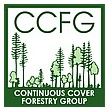WSAP bowled over by Cee…questration!
The Minister for the Environment and Sustainable Development with responsibility for forestry in Wales, John Griffiths AM, planted a Welsh oak last Thursday to illustrate the principle of carbon sequestration and the benefit in planting new trees in Wales to capture atmospheric carbon and turn it into useful material for substitution; all this being done simply by photosynthesis using the sun’s energy.
The occasion was one of the three annual meetings of the Woodland Strategy Advisory Panel (WSAP) where our chairman, Phil Morgan, represents the group.
Water, another important ingredient required to oil the wheels of sequestration, was in such overabundance on the day that the photo opportunities pointed to reasons why our new thirst for sequestration in Wales has taken so much urgency.
What we do with our forests when we have planted the 100,000 hectares we plan to establish over the next 20 years is in question. And even more importantly what do we do with the ones we already have? We already have 303,500 hectares of woods and forests or about 14.3% of the land in Wales. Tree planting has very definite limits; additionality cannot be toped when we have reached the point of optimal land-use potential or equilibrium. There is only a very limited amount of land still to be planted with trees in Wales for additional sequestration so there may be more value in concentrating on improving the established resource. This drive for new planting may be a convenient distraction being promoted by a profession struggling to wean itself from a culture of controlling species and production cycles. Very encouragingly there were real signs during the visit to a move towards integrated systems where we gain benefits from using natural processes. There is definitely a desire to explore ways to adopt close to nature forest principles so that we grow better timber more cost effectively and provide the sort of environmental safeguards that will mitigate the effects of the rains that nearly washed the Minister away, while also increasing niche spaces for wildlife to develop greater complexity and increasing our carbon storage capacities.
Convincing a profession such as foresters that change is a good thing is hard enough. It is a different issue when convincing the public because they are the owners of the forest and are not concerned with the technical arguments their managers can argue endlessly about. Conveying the right image is all important, and if that message is wrong, it can undo the best of plans. So, if we want to make an argument for forests being guardians of carbon, we have to be clear about what we are saying and to convey the idea in the best possible way. Somehow “come and see our carbon clearfell” or “come, let me show you how we clearfell the carbon” does not go down too well at all. However, “come walk with me in our forest which is here for ever and see how the trees produce the wood to build and heat your homes and are homes for wildlife and how they keep our rivers clean” is much better but much too long and sounds like a cracked record… “Come to the Carbon Forest” has the right ring to it.
Tags: meeting


